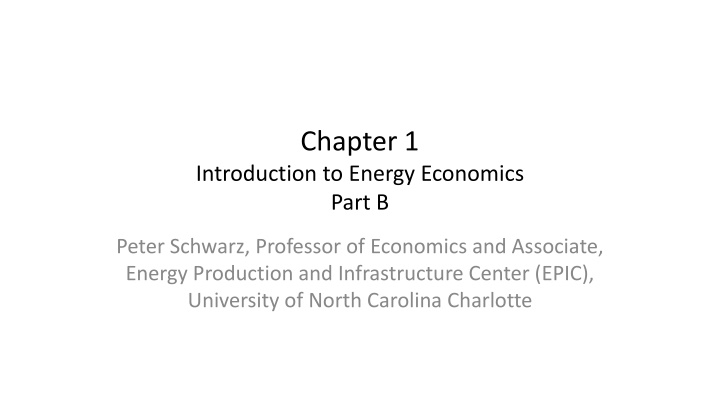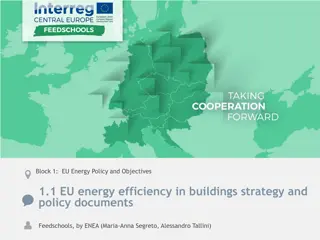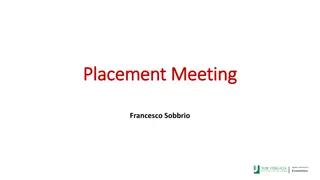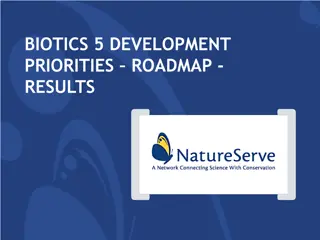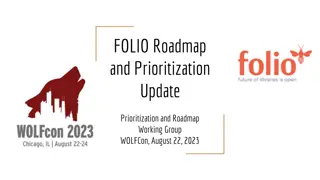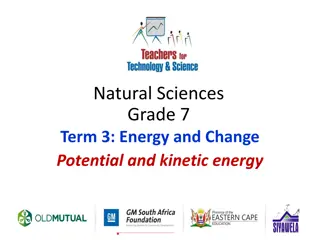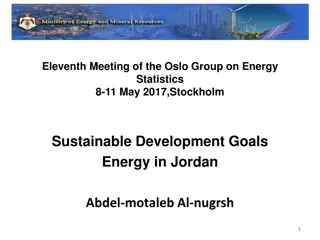Introduction to Energy Economics: Key Issues and Roadmap
Energy economics is crucial for understanding the impact of energy production on the planet and society. This introduction covers key energy issues such as climate change, resource scarcity, and economic approaches. It provides a roadmap for readers to navigate through the complex world of energy economics and its implications for modern life.
Download Presentation

Please find below an Image/Link to download the presentation.
The content on the website is provided AS IS for your information and personal use only. It may not be sold, licensed, or shared on other websites without obtaining consent from the author.If you encounter any issues during the download, it is possible that the publisher has removed the file from their server.
You are allowed to download the files provided on this website for personal or commercial use, subject to the condition that they are used lawfully. All files are the property of their respective owners.
The content on the website is provided AS IS for your information and personal use only. It may not be sold, licensed, or shared on other websites without obtaining consent from the author.
E N D
Presentation Transcript
Chapter 1 Introduction to Energy Economics Part B Peter Schwarz, Professor of Economics and Associate, Energy Production and Infrastructure Center (EPIC), University of North Carolina Charlotte
Chapter 1 Outline I. Why Energy Economics? II. Energy Indispensable to Modern Life III.Key Energy Issues IV.Economic Approach V.A Roadmap for the Reader of 17 2
Key Energy Issues (1) A.Are We Running Out? B.Effects on the Planet 1. Climate Change 2. Production of 17 3
Key Energy Issues (2) Are we running out? Hubbert Curve US Oil Production 1920-2012. Data Source: US Energy Information Administration (eia.gov) US Oil Production 2000-2012. Data Source: US Energy Information Administration (eia.gov) of 17 4
Key Energy Issues (3) A. Are we running out? Hubbert model fails to consider: Price Higher price Additional reserves economical Motivates new technologies Search for alternative fuels Absolute Scarcity (Physical Reserves) vs. Relative Scarcity (Opportunity Cost) of 17 5
Key Energy Issues (5) Limits to Growth (Meadows, et al. 1972) Resource Collapse ( la Paul Ehrlich) Environmental Collapse Population Explosion Neo-Malthusians Economist Response ( la Julian Simon) Price New Reserves, Technology, Alternatives Growth in income: Demand better environment Advanced economy: Demand fewer children of 17 6
Key Energy Issues (6) Are we running out? The Bet Julian Simon vs. Paul Ehrlich https://en.wikipedia.org/wiki/File:Simon-Ehrlich.png of 17 https://en.wikipedia.org/wiki/File:Simon-Ehrlich.png http://www.wsj.com/articles/SB100014241278873 24165204579026631593290784 7
Key Energy Issues (7) A.Are we running out? Hotelling (1931) Model: Dynamic model Incorporates time Balance today s price vs. future price Price rises over time At rate of interest of 17 8
Key Energy Issues (8) Total U.S. Greenhouse Gas Emissions by Economic Sector in 2013 Total U.S. Greenhouse Gas Emissions by Economic Sector in 2013 B. Effects on Planet 1. Climate Change CO2 Methane http://www.epa.gov/climatechange/ghgemis sions/sources/electricity.html of 17 9
Key Energy Issues (9) B. Effects on Planet 2. Production Coal Variable (intermittent) Mountain top removal Coal ash spills Oil Spills Double-hulled ships Natural Gas Fracking Nuclear Waste Hydro Dams Wind Solar Land required Viewshed of 17 10
IV. Economic Approach (1) A.Efficiency and Inefficiency B.Market Failure and Government Failure of 17 11
IV. Economic Approach (1) A.Efficiency and Inefficiency Efficiency Get the most from scarce resources Net Benefit = Benefit-Cost Stop when MB = MC. of 17 12
IV. Economic Approach (2) Pareto Pareto Improvement Possible to make someone better off without making someone else worse off. Efficiency Impossible to make someone better off without making someone else worse off. Hicks-Kaldor Potential Pareto Efficiency Winners could compensate the losers But compensation does not take place of 17 13
IV. Economic Approach (3) Government Regulation Command-and-control Technology-based Standard-based Inefficient Incentive- (market-) based Taxes Trading of 17 14
IV. Economic Approach (4) A.Efficiency and Inefficiency B.Market Failure and Government Failure of 17 15
Choose the least bad solution. IV. Economic Approach (5) A.Efficiency and Inefficiency B. Market Failure and Government Failure Market Failure Market fails to produce an efficient outcome Ex. Externalities Government Failure Government fails to remedy market inefficiency Ex. Ethanol Ronald Coase, 1910-2013 https://www.coase.org/aboutronaldcoase.htm of 17 16
http://news.sap.com/sap-roadmap-for-human-resources/ A Roadmap for the Reader III. Alternatives A. Renewable Fuels B. Next-Generation Alternatives C. Energy Efficiency I. Fundamentals A. Introduction B. Energy, Markets, and Society C. Static Efficiency D. Dynamic Efficiency II. Conventional Energy Sources A. Oil B. Natural Gas C. Coal D. Nuclear IV. Electricity A. Traditional Regulation B. Deregulation and Restructuring V. Policy A. Environment B. Sustainability C. National Security D. Comprehensive Energy Policy of 17 17
